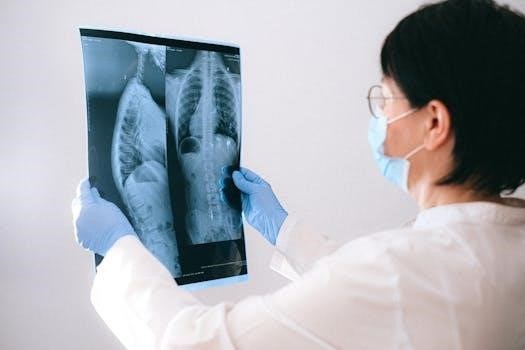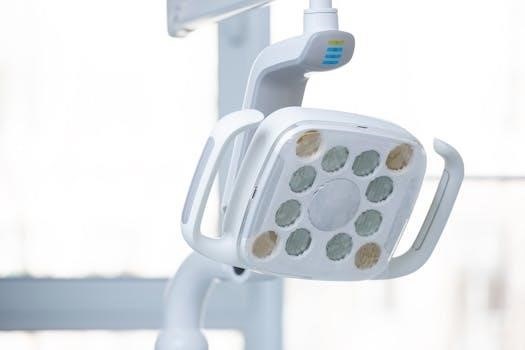
Integumentary System Overview
The integumentary system is a major body system encompassing the skin and its accessory structures. This includes hair, nails, and various glands. It forms a protective barrier and plays a crucial role in sensory functions and temperature regulation. This system is the largest organ system in the human body.
Definition of the Integumentary System
The integumentary system, in essence, refers to the body’s outer covering. It is the largest organ system, encompassing not only the skin but also its various derivatives. These derivatives include structures like hair, nails, and several types of glands, such as sweat and sebaceous glands. It acts as a physical barrier, protecting the internal environment from external threats. The integumentary system is not merely a passive covering; it is an active and dynamic system involved in multiple bodily functions. This system, therefore, plays a crucial role in maintaining homeostasis. It is a complex, multi-layered structure that provides protection, aids in temperature regulation, and facilitates sensory perception. It is responsible for numerous functions, from protecting against infection to synthesizing vitamin D. The components work together to ensure the overall health and well-being of the organism. It is a vital interface between the body and the external world. Its definition encompasses its protective, regulatory, and sensory functions.
Components of the Integumentary System
The integumentary system is comprised of several key components working in harmony. Primarily, the skin itself is the most substantial part, acting as the primary barrier. This includes the epidermis, dermis, and hypodermis, each with distinct structures and functions. The epidermis is the outermost layer, providing the first line of defense. Beneath it, the dermis contains blood vessels, nerve endings, hair follicles, and glands. The hypodermis, or subcutaneous tissue, provides insulation and cushioning. Accessory structures are also vital. These include hair, which aids in insulation and protection; nails, which protect the tips of fingers and toes; and various glands, such as sudoriferous (sweat) glands, sebaceous (oil) glands, and ceruminous (ear wax) glands. These components, working together, form the comprehensive integumentary system. Each part plays a role in maintaining the overall integrity and function of the system, contributing to protection, temperature regulation, and sensation.

Skin Structure and Layers
The skin is composed of three distinct layers⁚ the epidermis, dermis, and hypodermis. Each layer has a specific structure and function. These layers work together to protect the body and maintain homeostasis. They are critical for the integumentary system.
Epidermis
The epidermis is the outermost layer of the skin, serving as the body’s first line of defense against external factors. It’s composed of stratified squamous epithelium, which is keratinized, providing a tough, protective barrier. This layer is avascular, meaning it lacks blood vessels, and relies on diffusion from the dermis for nutrients. The epidermis is constantly regenerating, with new cells forming at the base and migrating to the surface, where they eventually shed. This process ensures the maintenance of the protective barrier.
The thickness of the epidermis varies depending on the body location, being thicker on areas exposed to more friction, such as the palms and soles.
It plays a crucial role in preventing water loss and the entry of pathogens. Specialized cells, including melanocytes, are also present within the epidermis. Melanocytes produce melanin, which is responsible for skin pigmentation and protection against ultraviolet radiation. Other cells, like Langerhans cells, are part of the immune system, while Merkel cells are involved in light touch sensation. The epidermis is therefore not simply a protective layer, but a complex and dynamic tissue with multiple functions.
Dermis
The dermis is the layer of skin situated directly beneath the epidermis, forming the bulk of the skin’s structure. It’s a strong, flexible connective tissue layer, providing support and elasticity to the skin. Unlike the epidermis, the dermis is highly vascular, containing a network of blood vessels that nourish the skin and regulate temperature. It also houses various sensory receptors, hair follicles, and glands. The dermis is composed of two main layers⁚ the papillary layer and the reticular layer. The papillary layer, located just below the epidermis, is characterized by its finger-like projections called dermal papillae, which interlock with the epidermal ridges, enhancing the connection between the two layers. The reticular layer is the deeper, thicker layer, composed of dense irregular connective tissue containing collagen and elastin fibers.
This fibrous network provides the dermis with its strength and elasticity. Within the dermis, various structures are embedded, including hair follicles, sweat glands, sebaceous glands, and nerve endings. These structures are crucial for the functions of the skin, such as hair growth, sweat production, sebum secretion, and sensory perception. The dermis plays a vital role in maintaining skin integrity and supporting its various functions.
Hypodermis
The hypodermis, also known as the subcutaneous layer, is the deepest layer of the integumentary system, situated below the dermis. Although not technically considered part of the skin, it is closely associated with it. The hypodermis primarily consists of loose connective tissue, rich in adipocytes, or fat cells. This adipose tissue serves as a crucial energy reserve for the body. In addition to fat storage, the hypodermis acts as an insulator, helping to regulate body temperature by preventing heat loss. The layer also functions as a shock absorber, protecting underlying tissues and organs from physical trauma. The hypodermis contains larger blood vessels and nerves that supply the skin. It anchors the skin to the underlying muscles and fascia, allowing for some degree of movement. The thickness of the hypodermis varies throughout the body and between individuals, depending on factors like age, sex, and nutritional status. It’s more abundant in areas prone to fat accumulation, such as the abdomen, thighs, and buttocks. The hypodermis is essential for the overall health and function of the skin and the body. It provides cushioning, insulation, and energy storage, while also playing a role in anchoring the skin and allowing for limited movement.

Accessory Structures
The integumentary system includes several accessory structures. These are hair, nails, and various types of glands like sudoriferous, sebaceous, and ceruminous. These components support the skin’s functions, providing protection, sensation, and temperature regulation.
Hair
Hair is an important accessory structure of the integumentary system, playing a role in protection, insulation, and sensation. It is composed of keratinized filaments that grow from hair follicles located within the dermis. The hair shaft is the visible portion, while the hair root is embedded in the follicle. Hair follicles are complex structures that also include sebaceous glands, which secrete sebum to lubricate the hair. Hair provides a protective barrier to the scalp, shielding it from sunlight and other external elements. It also serves a sensory function by detecting movement and touch. The presence of arrector pili muscles, attached to hair follicles, allows the hair to stand up in response to cold or fear. Hair growth occurs in cycles, with periods of active growth followed by periods of rest. Different types of hair cover the body, including terminal hair, which is thick and pigmented, and vellus hair, which is thin and fine. Overall, hair contributes significantly to the overall function and appearance of the integumentary system.
Nails
Nails are another essential accessory structure of the integumentary system, serving both protective and functional purposes. These hard, plate-like structures are composed of keratin, a tough protein that also forms hair and the outer layer of skin. The nail body, the visible part of the nail, rests on the nail bed, which is the underlying layer of skin. The nail root is embedded within the skin, and the lunula, the whitish, crescent-shaped area at the base of the nail, represents the visible portion of the nail matrix, where new nail cells are produced. The cuticle is a layer of skin that surrounds and protects the nail root. Nails primarily function to protect the sensitive fingertips and toes from mechanical damage. They also aid in grasping objects, manipulating small items, and provide counter pressure to the fingertips, improving tactile sensation. Nail growth is a continuous process, with new cells being produced at the nail matrix, pushing older cells forward. The appearance and health of nails can also provide important clues about a person’s overall health, often reflecting underlying systemic conditions.
Glands
The integumentary system houses various types of glands, each with distinct functions contributing to overall body homeostasis. These glands are essential accessory structures that secrete substances onto the skin’s surface or into hair follicles. Sebaceous glands, for instance, produce sebum, an oily substance that lubricates and waterproofs the skin and hair, preventing dryness and brittleness. Sudoriferous glands, also known as sweat glands, are crucial for thermoregulation, secreting sweat to cool the body through evaporation. These glands are further categorized into eccrine and apocrine types, with eccrine glands being more abundant and involved in temperature control, while apocrine glands are located in specific areas and produce secretions with a more complex composition. Ceruminous glands, another type of gland found in the ear canal, secrete cerumen, or earwax, protecting the ear canal from foreign particles and pathogens. Lastly, mammary glands, although not always considered part of the integumentary system, are modified sweat glands that produce milk in females. Collectively, these glands play vital roles in maintaining skin health, regulating body temperature, and providing protection against external factors.
Receptors
The integumentary system is not only a protective barrier but also a complex sensory organ, richly endowed with various types of receptors. These receptors are specialized nerve endings that detect a wide range of stimuli from the external environment. Mechanoreceptors, for example, respond to mechanical forces such as touch, pressure, and vibration, allowing us to perceive textures and physical contact. Thermoreceptors detect changes in temperature, enabling us to sense heat and cold. Nociceptors are pain receptors that alert us to potential tissue damage, triggering protective reflexes. These receptors are not evenly distributed throughout the skin, with some areas having a higher density of certain types of receptors than others. For instance, fingertips have a high concentration of mechanoreceptors, making them highly sensitive to touch. Additionally, some receptors are located deeper within the skin, while others are closer to the surface. Sensory information from these receptors is transmitted to the central nervous system, where it is processed to provide us with a detailed understanding of our surroundings and our interaction with them. These receptors are crucial for both conscious perception and unconscious reflex responses, ensuring our safety and awareness of our environment.

Functions of the Integumentary System
The integumentary system has several vital functions, including protection, temperature regulation, and sensory perception. It also helps in vitamin D synthesis and has some excretory functions. This system forms the body’s outer barrier;
Protection
The integumentary system, primarily through the skin, serves as the body’s primary protective barrier. This barrier shields the internal organs and tissues from a multitude of external threats. It prevents the entry of harmful pathogens such as bacteria, viruses, and fungi, which can cause infections. The skin’s structure, with its layers and specialized cells, is designed to resist physical damage from abrasions, cuts, and impacts. Furthermore, the system acts as a barrier against harmful chemicals and toxins, limiting their absorption into the body. It also provides protection from the sun’s ultraviolet (UV) radiation, which can damage cells and lead to skin cancer. The presence of melanin, a pigment, in the skin helps absorb UV radiation, offering a form of natural sun protection. The integumentary system’s protective functions are crucial for maintaining overall health and preventing various diseases and injuries. The skin also protects the body by preventing excessive water loss.
Temperature Regulation
The integumentary system plays a critical role in regulating body temperature, a vital function for maintaining homeostasis. When the body temperature rises, the blood vessels in the skin dilate, a process called vasodilation. This allows more blood flow to the skin surface, facilitating heat loss through radiation and convection. Simultaneously, the sweat glands within the skin become active, producing sweat. As sweat evaporates from the skin’s surface, it cools the body. In contrast, when the body temperature decreases, the blood vessels in the skin constrict, known as vasoconstriction. This reduces blood flow to the surface, conserving heat within the body’s core. The arrector pili muscles, attached to hair follicles, contract, causing hair to stand on end, creating a layer of insulation. This mechanism is more effective in animals with dense fur but still provides some heat retention in humans. These thermoregulatory functions of the integumentary system are vital for maintaining a stable internal environment despite external temperature variations.
Sensory Function
The integumentary system is not just a protective barrier; it’s also a sophisticated sensory organ, teeming with a variety of specialized receptors that enable us to perceive the world around us. These receptors are distributed throughout the skin and detect different types of stimuli, transforming them into signals that the nervous system can interpret. There are mechanoreceptors, sensitive to touch, pressure, vibration, and texture, allowing us to discriminate between fine and coarse sensations. Thermoreceptors detect changes in temperature, enabling us to perceive hot and cold. Nociceptors, or pain receptors, are responsible for detecting potentially harmful stimuli, alerting us to injury or damage. These receptors are particularly concentrated in areas like the fingertips and lips, which are crucial for detailed tactile exploration. The density and distribution of these receptors vary across the body, resulting in differing levels of sensitivity. The skin’s sensory capabilities are crucial for interacting with the environment, providing essential information for both protection and interaction.
